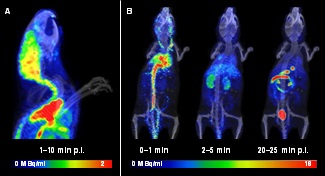Fluorescent Imaging of Chemical Oxygen Sensors
Hypoxia (tissue oxygen starvation) occurs in most solid tumours and predicts poor clinical outcome. Chemical agents that exhibit hypoxia-selective cytotoxicity have been subject to drug development over several decades, yet available compounds suffer from poor oxygen sensitivity and unfavourable pharmacokinetic properties, which limits their clinical applications. We have recently designed a new chemical oxygen sensor that provides superior sensitivity, and tissue uptake, in a perfused heart model. This major advance is likely to be achieved through sub-cellular targeting. The overall aim of this project is to investigate the mechanism of drug delivery to hypoxia sensitive cell compartments. The primary role of the student will be to set up a fluorescent cell assay to characterise drug uptake. The project is suitable for a student with a background in biology, and an interest in drug discovery. The project will allow you to gain practical experience in cell work and fluorescence microscopy.

